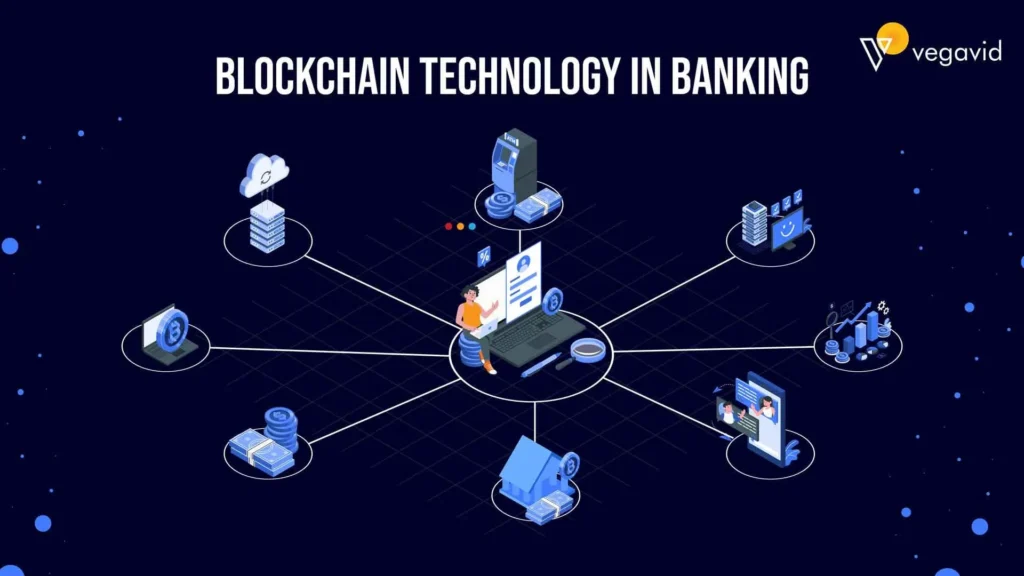Banking has always been the backbone of modern economies. For centuries, banks have acted as trusted intermediaries, helping people store, transfer, and grow money. But in the digital age, trust is no longer limited to traditional institutions. A new technology—blockchain—is transforming how we think about money and how we interact with banks.
Once associated only with cryptocurrencies like Bitcoin, blockchain has now moved far beyond that. Today, it’s reshaping everyday banking, from payments to lending to security. In this article, we’ll explore how blockchain works, why it’s disrupting banks, and what the future of financial services could look like in a blockchain-driven world.
What Is Blockchain in Simple Terms?
At its core, blockchain is a decentralized digital ledger that records transactions across a network of computers. Unlike traditional banking ledgers, which are controlled by one central authority (like a bank), blockchain is distributed, transparent, and immutable.
Key features of blockchain:
- Transparency: Everyone in the network can view transactions.
- Security: Data is encrypted and almost impossible to alter.
- Decentralization: No single party controls the system.
- Efficiency: Transactions can occur faster, often without intermediaries.
This makes blockchain a natural fit for banking, where trust, security, and efficiency are crucial.
Why Banks Are Embracing Blockchain
Banks initially viewed blockchain as a threat because it enabled decentralized currencies that bypassed traditional systems. But over time, they recognized its potential benefits:
- Reduced costs – Fewer middlemen and faster settlement times.
- Greater security – Blockchain reduces fraud and identity theft.
- Improved transparency – Transactions are recorded permanently.
- Access to innovation – Competing in a fintech-driven world.
Today, global financial institutions like JPMorgan Chase, HSBC, and Citibank are actively investing in blockchain applications.
How Blockchain Is Changing Everyday Banking
Let’s look at specific areas where blockchain is reshaping banking services.
1. Payments and Money Transfers
Traditional money transfers can take days, especially across borders. They often involve multiple intermediaries, each taking a fee.
With blockchain:
- Cross-border payments are near-instant.
- Transaction costs drop significantly.
- Currencies can be exchanged without intermediaries.
For example, Ripple’s blockchain network allows banks to settle international payments in seconds instead of days.
2. Faster Settlements and Clearing
In banking, when you buy or sell stocks or bonds, it can take two to three days for transactions to settle. Blockchain streamlines this by recording and verifying trades instantly.
Impact:
- Reduces counterparty risks.
- Frees up capital more quickly.
- Increases liquidity in financial markets.
3. Fraud Prevention and Security
Fraud is one of the biggest challenges for banks. From fake checks to identity theft, billions are lost annually.
Blockchain combats this by:
- Storing encrypted, tamper-proof records.
- Making it nearly impossible to alter transaction histories.
- Using identity verification through digital IDs.
With blockchain, customers and banks both benefit from stronger protection.
4. Loans and Credit Verification
Currently, loan approvals require checking credit scores, employment history, and income, often through third-party agencies.
Blockchain can simplify this process by:
- Creating a shared, secure credit history ledger.
- Reducing reliance on credit bureaus.
- Allowing faster approvals and lower costs for borrowers.
This makes financial services more accessible to people who are underbanked or lack traditional credit histories.
5. Smart Contracts for Banking Services
Smart contracts are self-executing agreements coded into a blockchain. They automatically enforce rules when conditions are met.
Banking uses include:
- Automating loan repayments.
- Triggering payments for insurance claims.
- Simplifying mortgage processing.
By removing human intervention, smart contracts cut delays and errors.
6. Digital Identity and KYC (Know Your Customer)
Banks are required to verify identities for compliance and security. The current KYC process is costly and repetitive for customers.
Blockchain enables digital identity management:
- Customers can store identity documents securely.
- Banks can access and verify identities instantly.
- Customers avoid repeated KYC processes at multiple banks.
This saves time and reduces compliance costs.
7. Tokenization of Assets
Blockchain makes it possible to represent real-world assets—like stocks, real estate, or bonds—as digital tokens.
Why it matters:
- Makes investing more accessible to small investors.
- Enables faster and cheaper trading.
- Unlocks liquidity in traditionally illiquid markets.
For example, instead of buying an entire property, investors can buy tokenized shares of it.
Everyday Benefits for Consumers
So how does all this affect you, the everyday banking customer?
- Cheaper services – Lower fees for transfers and loans.
- Faster access – Instant payments, approvals, and settlements.
- More inclusion – Banking access for people without traditional credit.
- Greater control – Transparency into how money moves.
- Improved trust – Reduced risks of fraud and errors.
In short, blockchain makes banking simpler, faster, and fairer.
Challenges of Blockchain in Banking
While the potential is huge, there are challenges:
- Regulation: Governments are still figuring out how to regulate blockchain.
- Scalability: Blockchain networks need to handle billions of transactions.
- Adoption barriers: Banks must overhaul old systems to adopt blockchain.
- Energy consumption: Some blockchains use significant computing power.
- Consumer awareness: Many people don’t fully understand blockchain yet.
Banks will need to solve these before blockchain becomes mainstream.
FAQs About Blockchain in Banking
Q1: Is blockchain the same as Bitcoin?
No. Bitcoin is one application of blockchain. Blockchain itself is a broader technology used in many industries, including banking.
Q2: Will blockchain replace banks?
Not entirely. Instead, it will reshape how banks operate, making them more efficient and consumer-friendly.
Q3: Are blockchain-based transactions safe?
Yes. Blockchain uses encryption and decentralization, making transactions highly secure compared to traditional methods.
Q4: Can blockchain help people without bank accounts?
Yes. Blockchain enables peer-to-peer financial services, giving unbanked individuals access to digital money and credit.
Q5: When will blockchain become standard in banking?
Experts predict mainstream adoption by the early 2030s, though many banks are already testing blockchain solutions today.
Conclusion
Blockchain is more than just a buzzword—it’s a revolution in finance. By improving payments, security, lending, and transparency, it’s changing how banks serve customers in everyday life. While challenges remain, the benefits for both banks and consumers are undeniable.
In the future, banking may no longer rely on outdated systems and physical paperwork. Instead, blockchain-powered banks will deliver instant, secure, and inclusive services—all with greater trust and efficiency.
The transformation has already begun, and those who adapt early will be better positioned for the future of money.
For more insights on blockchain and digital banking, explore:


